- Home
- slideshows
- miscellaneous
- Dozens of discoveries have upended our pictures of T. rexes, raptors, and other dinosaurs. Here's how the 'Jurassic Park' movies haven't kept up with the times, according to experts.
Dozens of discoveries have upended our pictures of T. rexes, raptors, and other dinosaurs. Here's how the 'Jurassic Park' movies haven't kept up with the times, according to experts.
According to Horner, Spielberg purposefully chose to depict most of his dinosaurs as scaly and grey, brown, or green in color. Horner sees that as the biggest factual inconsistency in the movies.

Three decades after that conversation, scientists are even more certain that dinosaurs like oviraptors (relatives of velociraptors) and T. rexes had feathers.
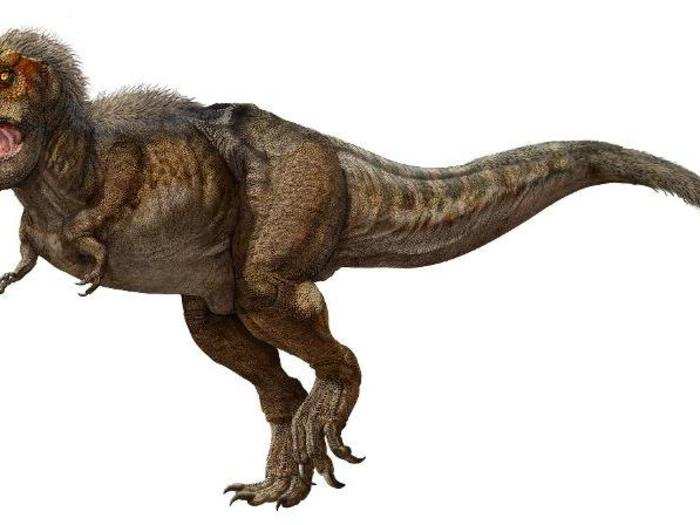
Since the first "Jurassic Park" movie came out, paleontologists have discovered that many dinosaurs not only had feathers, but also likely had the beginnings of wings.
"We know now that many dinosaurs were dancers," Horner said. "The feathers were for display, as muscles in their tails helped them wave and woggle and flaunt their feathers."
The dances were to attract mates, he added.
Typically, paleontologists come across evidence of feathers in the fossil record by discovering feather impressions caked into rock and sediment. But last month, researchers announced the discovery of feathers trapped in amber.
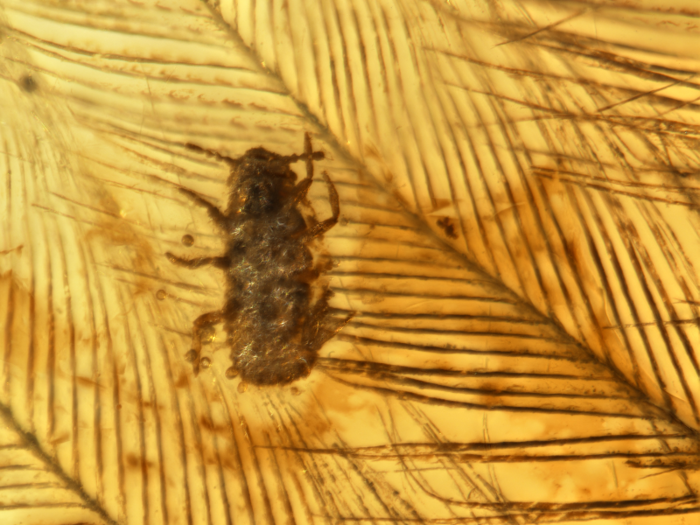
In a December study, scientists described two feathers from the mid-Cretaceous period (about 100 million years ago) found in the Kachin Province of Myanmar. The authors said the feathers belonged to a type of non-flying dinosaur.
The amber samples were so well preserved that they contained a form of prehistoric parasite akin to lice on the feathers.
Scientists haven't been able to extract DNA from these parasites, however, so any attempt to clone a T. rex from ancient blood (like the scientists in "Jurassic Park" do) remains a pipe dream.
Dinosaur feathers probably came in a rainbow of colors. "Barney the purple dinosaur is not a crazy idea," paleontologist Gregory Erickson told Business Insider.

So far, scientists only know the feather colors of a few dinosaurs, which they discovered by examining proteins in feathers called melanosomes.
A flying dinosaur called Sinosauropteryx had a bright, red-and-white tail, while the feathered, winged Microraptor sported a sleek, black sheen like a raven, according to a 2012 study. Even non-flying dinosaurs like the Borealopelta were more reddish-brown than greenish-grey.
Experts now think an adult T. rex rocked a mullet of feathers on its head, neck, and tail.
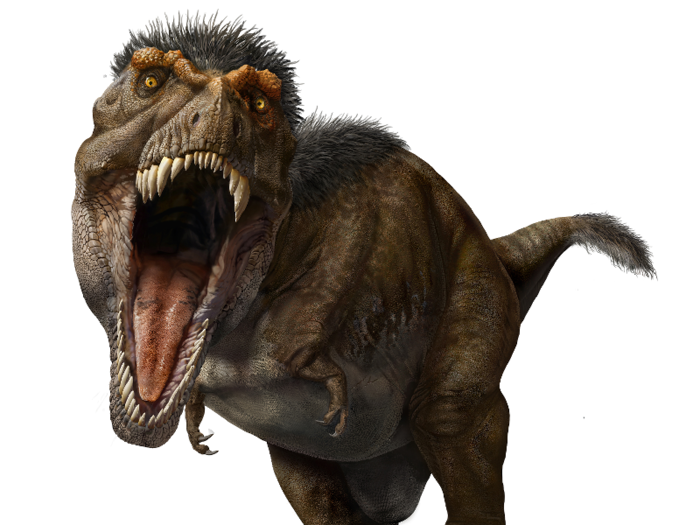
Feathers are rarely preserved in the fossil record, so they haven't been found on a T. rex specimen. But other dinosaur fossils, including those from other tyrannosaur species and their relatives, do have preserved feathers.
Mark Norell, a curator at the American Museum of Natural History, told Business Insider that means paleontologists can "safely assume" T. rex had feathers as well.
Scientists think they had patches of feathers on attention-getting areas like the head and tail. Horner thinks this may have attracted mates. The rest of adult T. rexes' bodies were mostly covered in scales.
Like the T. rexes in "Jurassic Park," however, real T. rexes did use their sharp, constantly growing teeth to attack prey.
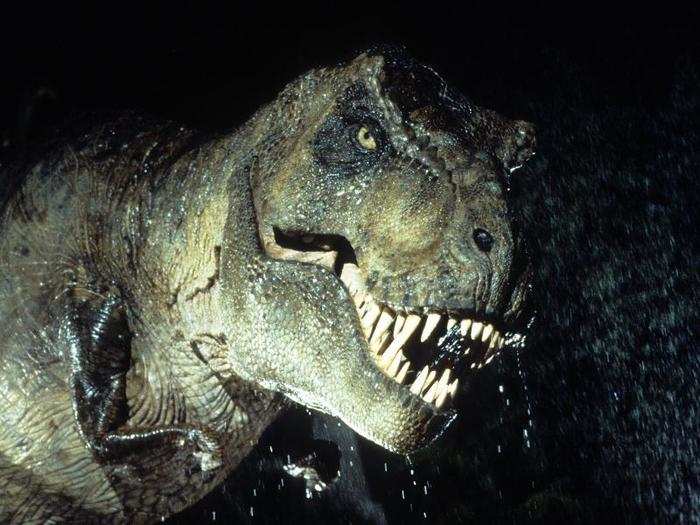
The T. rex had the rare ability to bite through solid bone and digest it. The dino had a bite force of 7,800 pounds, equivalent to the weight of about three Mini Cooper cars.
In the "Jurassic Park" movies, the T. rex is shown chomping down on other dinosaurs (and cars), then shaking its victim side to side. But Erickson said that's not quite how the predator ate.
"T. rex did puncture-and-pull feeding, in which it bit deeply into muscles and pulled straight back like a Komodo dragon does," he said.
But the T. rex couldn't run — instead, it walked quickly, at an impressive speed of up to 25 mph.
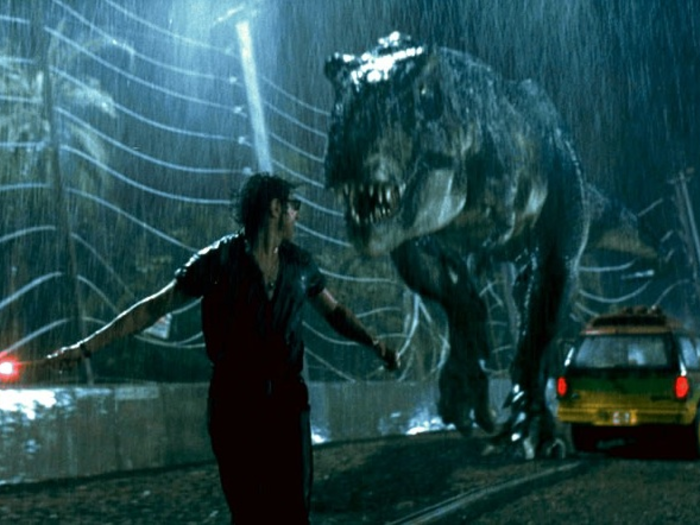
An adult T. rex's long stride allowed it to hit speeds of 10 to 25 mph. But the dinosaur never reached a suspended gait, since it always had at least one leg on the ground at all times.
So it's unlikely the T. rex in "Jurassic Park" could have kept up with a Jeep in high gear.
According to paleontologist Scott Persons, the "Jurassic Park" T. rex also has broken wrists.
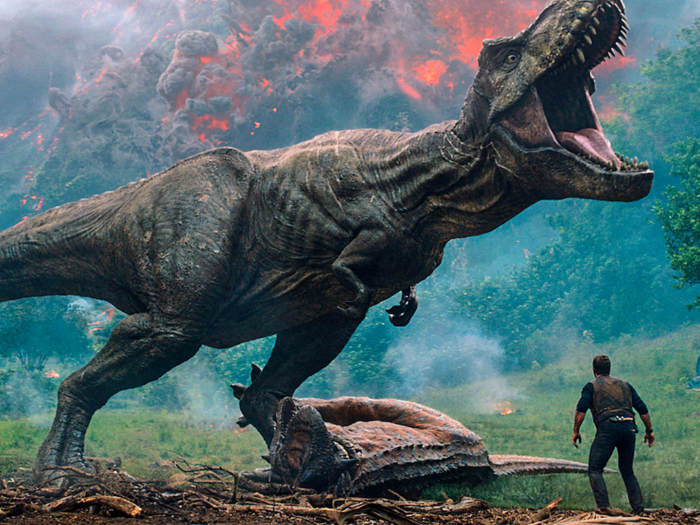
The wrists of the T. rex in the 1993 movie, Persons told Business Insider, are twisted unnaturally so that the animal's fingers point downward. An anatomically accurate rex, meanwhile, has sideways fingers, so it "looks like he's always clapping," Persons said.
This would have been easy to change in the more recent films in the franchise, he added, but the filmmakers are keeping the wrists consistent because they "want the dinosaur to look the way it originally did in 'Jurassic Park.'"
What's more, it's still unclear whether the T. rex ever really roared.
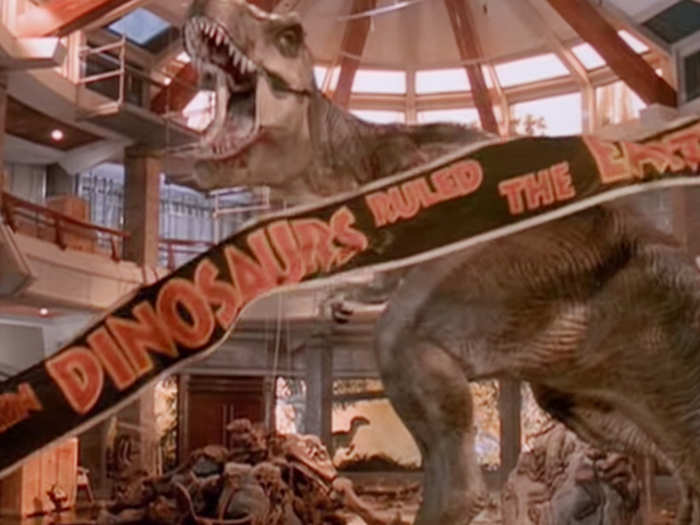
Scientists aren't sure what dinosaurs like velociraptors and T. rexes sounded like, but their best guesses are based on their closest living relatives: crocodiles and birds.
A 2016 study suggested that the T. rex probably didn't roar, but most likely cooed, hooted, and made deep-throated booming sounds like the modern-day emu.
In the third "Jurassic Park" film, paleontologist Alan Grant figures out the sound a velociraptor makes by using a 3D-printed resonance chamber from a fossilized velociraptor.
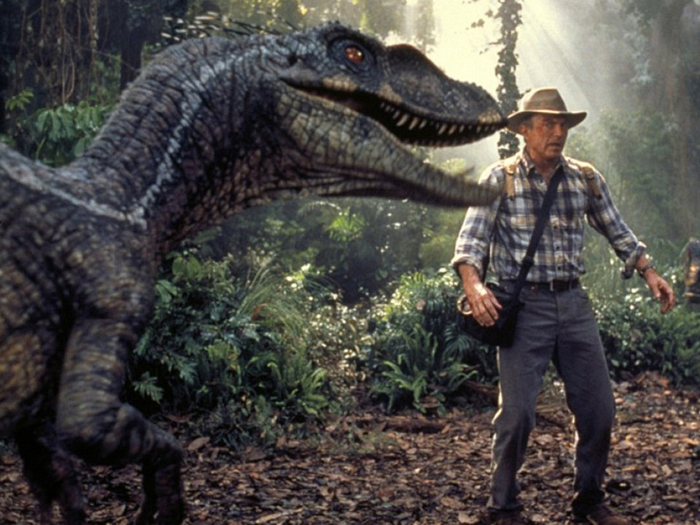
In the movie, he then uses the sound to communicate with the dinosaur's living relatives.
Horner said that's similar to something his lab at Montana State University once did, though they were researching a duck-billed dinosaur, not a raptor.
His team took a CAT-scan of a duck-billed dinosaur skull to get an image of the internal structure of the dino's inner nose.
"Then we made a rapid-type prototype and molded it, and were able to simulate air going through it to see what kind of sound the dinosaur would make," he said. According to that prototype, Horner added, the duck bill would produce a deep sound, like birds or an elephant.
Overall, Horner said, the franchise did a good job relaying that dinosaurs like velociraptors were the warm-blooded ancestors of today's birds, rather than cold-blooded reptiles.
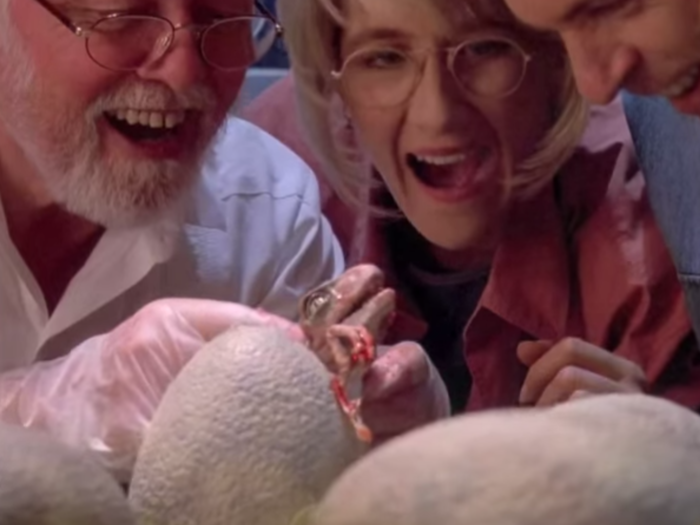
In the iconic kitchen scene in which velociraptors are hunting two children, one of the creatures breathes on the cold surface of the kitchen window, causing condensation.
That's a clear indication that the dinosaurs were warm-blooded, since it shows the raptor's internal temperature was warmer than its environment. At the time the movie came out in 1993, debate still raged among paleontologists about whether dinosaurs were warm- or cold-blooded.
Although paleontologists still don't agree about exactly where dinosaurs fall on the cold- to warm-blooded spectrum, a 2014 study found that the creatures most likely fell somewhere in the middle, unable to fully regulate their internal temperatures but "also not entirely at the whim of the environment."
A study published this week suggests that a dinosaur's ability to regulate its body temperature was related to its size.
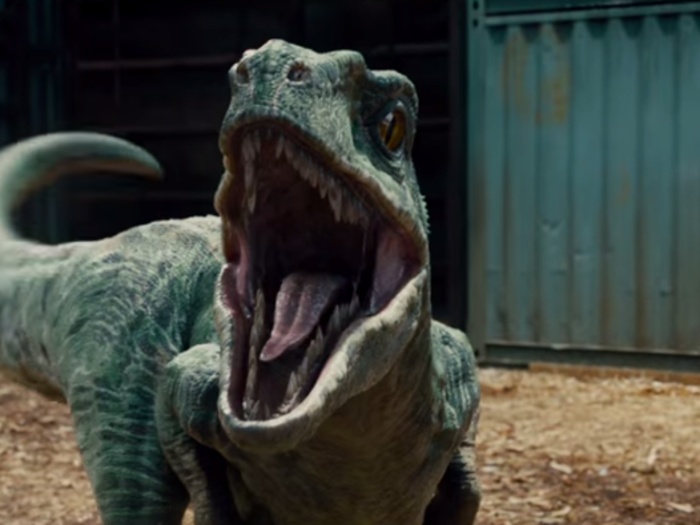
As the animals evolved to become smaller over time, the research suggests, their metabolic rates increased. That gradually led dinosaurs to become more warm-blooded.
Velociraptors, for example, were only 3 feet long and the size of a small turkey, which might explain why they were able to regulate their body temperatures. (The raptors depicted in the "Jurassic Park" films were far bigger than their real-life counterparts.)
Persons offered a few other qualms with some of the movie's additional dinosaur stars. "The 'Jurassic Park' triceratops is in desperate need of a face lift," he said.
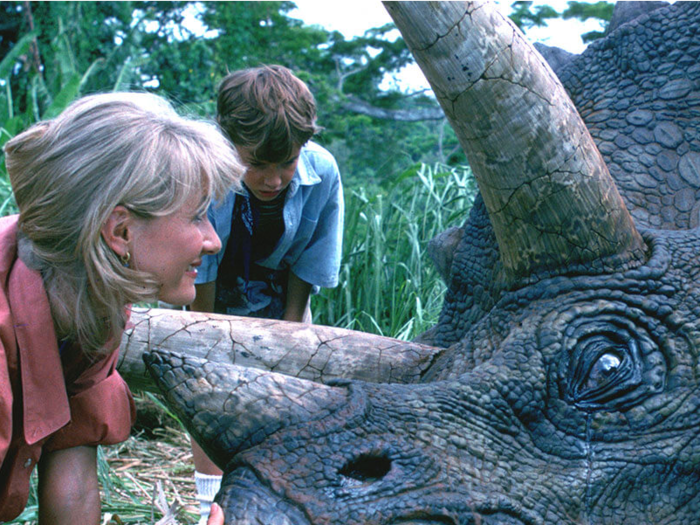
The Triceratops' head was among the largest of all land animals, making up roughly one-third of the length of the dinosaur's 30-foot body. The largest Triceratops skull ever found is 8.2 feet long.
The herbivore sported three horns: two long, curved horns above its eyes and a smaller horn on its snout. The snout horn of the triceratops in "Jurassic Park" (pictured above) is far too big, Persons said.
Real triceratops also had a frill that was used in combat and to attract mates.
The first dinosaur that enters the screen in "Jurassic Park" is a Brachiosaurus. But it, too, was depicted incorrectly, Persons said.
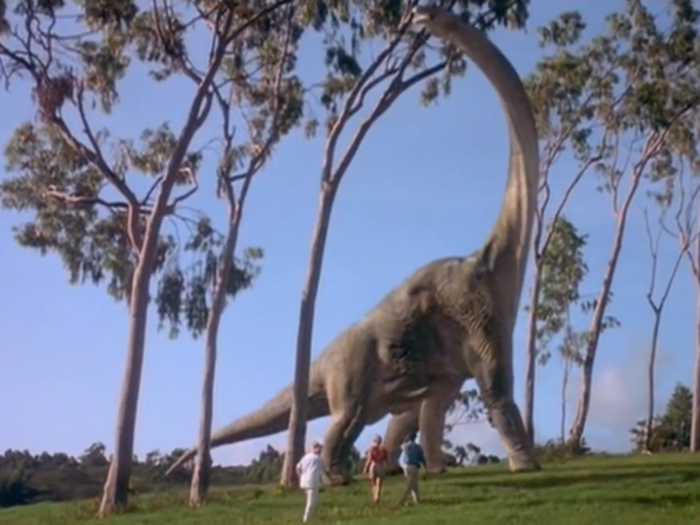
"Its feet are wrong," Persons added.
In the movie, the Brachiosaurus is shown with feet like an elephant; in reality, it had one big claw on the first toe of each front foot and claws on the first three toes of its back feet.
The most controversial dinosaur depiction in the whole franchise, according to Persons, is the Dilophosaurus.
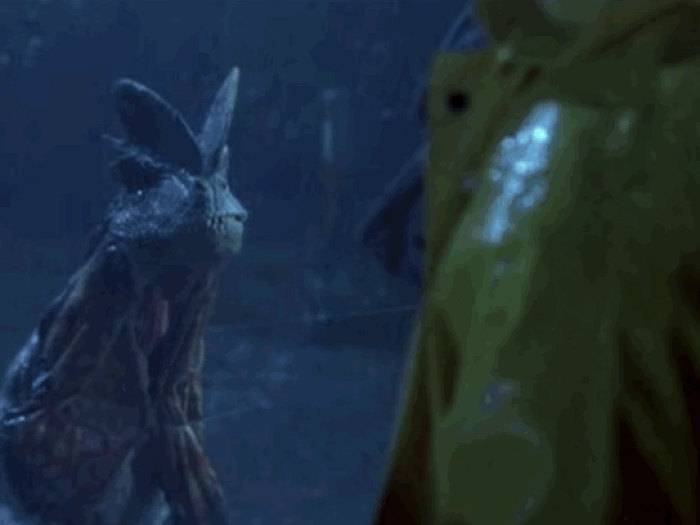
"A lot of paleontologists get very, very upset about Dilophosaurus," Persons said.
In the movie, the dog-sized dinosaur hunts down an unwitting computer programmer (played by Wayne Knight) by extending a circular neck frill and blinding him with poisonous spit.
The real Dilophosaurus was bigger than its on-screen depiction, Persons said — it grew up to 20 feet in length. And it probably didn't spit venom.
"Odds are you wouldn't have dinosaurs that do that," he said.
Persons thinks it's possible the dinosaur could have had a neck frill, but there's no evidence for that in the fossil record.
"If you look at the modern world, lots of animals have huge, flashy structures like lion manes, or the Frilled-neck lizard in Australia," he said. "I would say the odds are you are going to get some of that — there's going to be a dinosaur or that has some large flashy structure you didn't know about."
Homer said one dinosaur in "Jurassic Park III" got him into particular trouble with some of the movie's die-hard dinosaur fans.
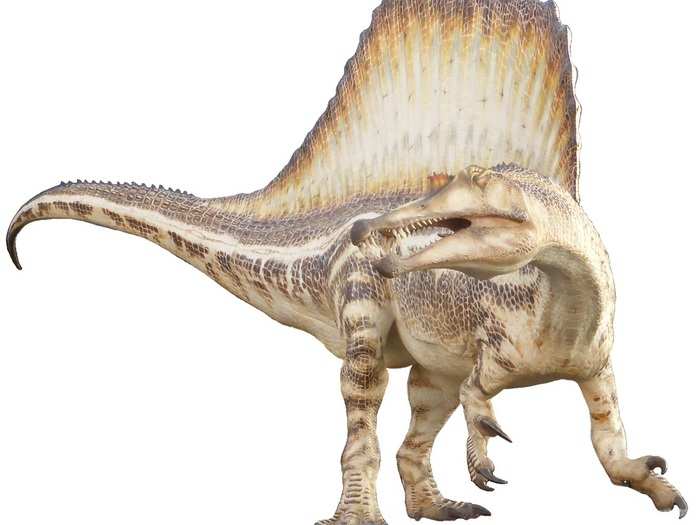
"For 'Jurassic Park III,' Steven [Spielberg] wanted another nasty dinosaur, and I said, 'Well Spiniosaurus is the biggest meat eater, there's evidence of 50-foot-long ones,' so that got into the movie," Horner said.
In the movie, a Spiniosaurus clashes with and kills a T. rex.
But now, Horner said, experts know that Spiniosaurus probably only ate fish and likely couldn't have left the water.
"The battles rages on with 6th graders," he said. "I get almost-hate mail that says Spiniosaurus couldn't take down a T. rex, and I agree with them."
Horner also took issue with the dinosaur billed as a Stygimoloch in "Jurassic World: Fallen Kingdom."
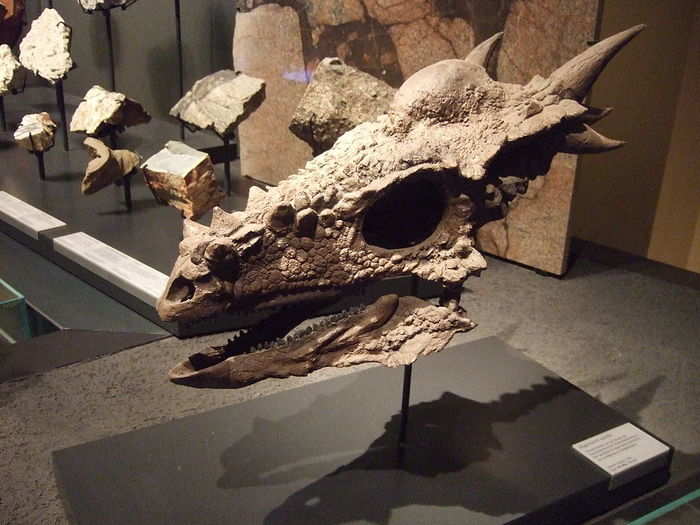
Before starting production on that movie, Horner said, the filmmakers sent him a script that included a Stygimoloch, which he didn't think actually existed. (In the film, it's the little domed-headed dinosaur that Chris Pratt's character uses to escape.)
"I was a little taken aback that they were using that," Horner said. He and other paleontologists think the Stygimoloch isn't its own species, but rather a juvenile Pachycephalosaurus — another type of thick-skulled dino.
"Clearly my advising was absolutely minimal at that point," he added.
To Horner, the most accurate dinosaur in the franchise was the Indominus rex from the movie "Jurassic World."
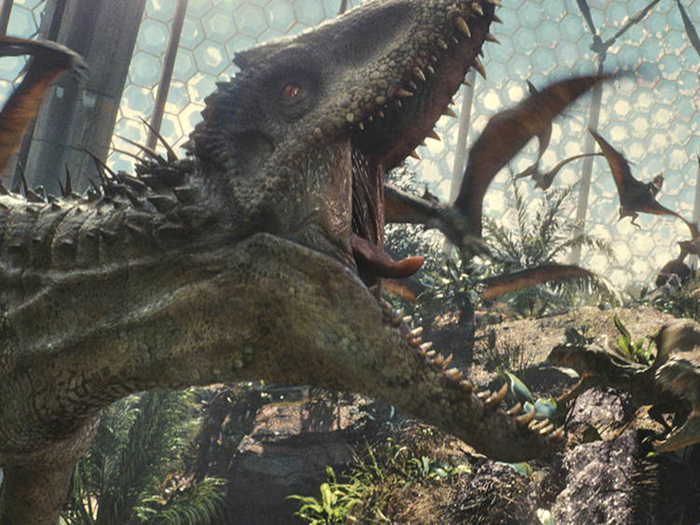
Indominus rex is a fictional cross between a T. rex and a velociraptor that's genetically engineered by scientists in the movie. Since it was a "made dinosaur," according to Horner, there are no standards of accuracy for it to live up to.
Persons, meanwhile, said his favorite dinosaur (in terms of its accuracy) was the Carnotaurus in "Jurassic World: Fallen Kingdom."
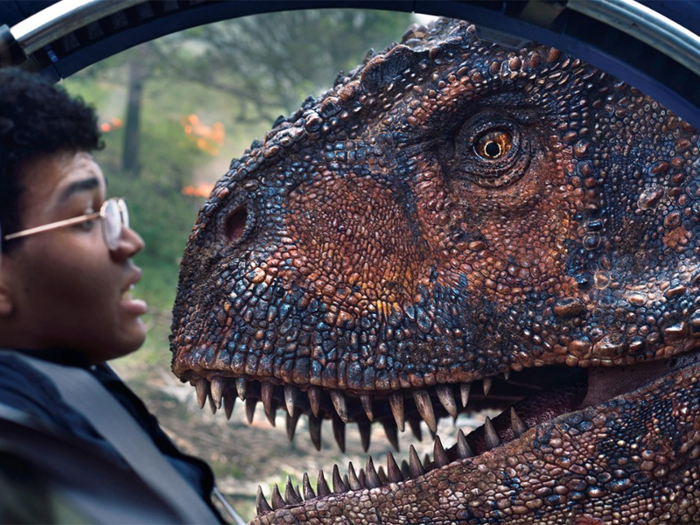
"The carnotaurus was pretty good reconstruction — a good CGI model," he said.
Only a single carnotaurus skeleton has ever been found in the fossil record — it was unearthed in Argentina. That two-legged predator sported two distinct horns above its eyes, a feature not found in any other dinosaur.
Norell, for his part, said "the franchise really has not kept up with the contemporary research at all."
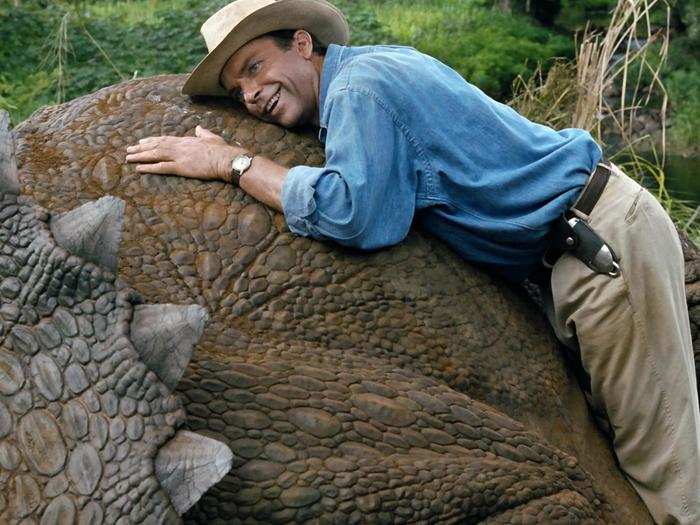
But according to Horner, there's a good reason for that: The dinosaurs in the original film "set the stage for basically the whole story and all the way through the first three 'Jurassic Park' movies," he said.
In the early 1990s, Horner added, Stan Winston — the live-action dinosaur technician for the first three "Jurassic Park" movies — didn't have the technology to create feathered, animatronic dinosaurs.
"Technically it wasn't possible at the time, so the first 'Jurassic Park' was what it was," Horner said. Then it didn't make sense to change the dinosaurs in the later films, he added, because the whole premise was that "we went out and got this DNA and that's what the resulting dinosaurs looked like."
"But 'Jurassic Park' is not supposed to be a documentary, and I won't pick on it for not being one," Norell said.
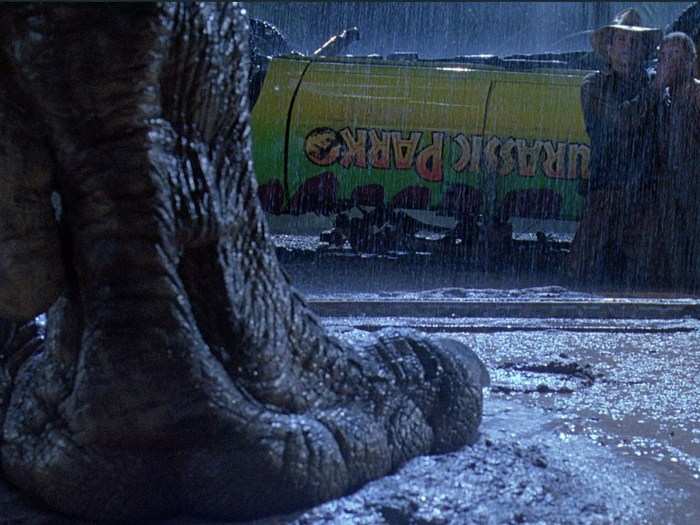
Ultimately, for paleontologists like Horner, Persons, Norell, and Erickson, the value of the "Jurassic Park" movies isn't in their accuracy.
Horner said the number of graduate students looking to work in his field skyrocketed after the movie came out.
"In the early 1990s I had a hard time getting graduate students to work in paleontology," he said. "After the movie came out, I was flooded with them."
Popular Right Now
Popular Keywords
Advertisement